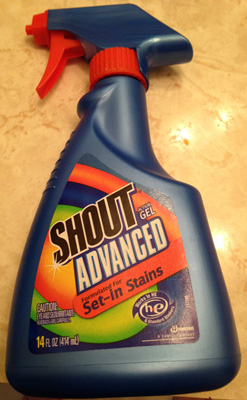As I discussed last week, hoarding is not a “weird” problem–it’s actually something that a lot more people do, and while some people are happy living with their various collections, some hoarders, like me, feel trapped by it.
I speak mainly from my own experience, having been a hoarder as long as I can remember. My main reasons for hoarding: I hate throwing away items that cost a good bit of money, even if they aren’t doing me any good anymore, because all I can see is dollars going in the trash. I also hate throwing away broken things, because all I can focus on is the waste of a good item…I end up keeping some broken things in the hope that I can somehow clean them up and fix them to work again.
However, one can only keep so many items before the collection begins to overwhelm your life. I am now in the fourth year of trying to dig out my life from amid the detritus…it’s not been an easy road, to put it mildly. But I’ve discovered a few tricks along the way that are helping me break through, and I hope this article will help fellow hoarders as well!
#1: The “Month Box”

The boxes pictured above have been the biggest help to me in deciding what to keep and what to get rid of. I call them the “month boxes.”
How It Works
The “month box” is a temporary storage place for items that need re-evaluation. Often when I’m cleaning and organizing, I become overwhelmed with the weighty task of discarding and purging items. Sometimes I’m getting rid of so much stuff that it makes me anxious. What if I’m getting rid of something I’m going to need later, just because I’m caught up in “purging?”
This fear has brought cleaning and organizing to an utter halt in the past; to ease the fear of discarding an important item, I have the “month box” set aside for items which I don’t really want to get rid of, but which I’m not sure that I need to keep. The ideal “month box” is small enough to keep it from becoming a junk storage place in its own right, but is big enough to hold a good number of items. (I’ve got two “month boxes” going at the moment, simply because one box has a couple of big, more fragile items and the other has a lot of smaller items.)
The most important thing about the “month box:” if after one month has passed, I have not touched any of the items in the box, then they can likely be safely purged.
This has helped me keep on cleaning and organizing without so much of the crippling fear of “losing something important,” and it also holds me accountable for either keeping or purging items at the end of a set time frame. (That box on the left is coming up on its month deadline here in about a week…eek, I better get moving on that!)
#2: The “Important Box”
I don’t know about other hoarders, but I do know that my house’s mess tends to “eat” important things, like medical paperwork, keys, bills, phone chargers, car registrations, spare change, appliance manuals, etc. The mess then regurgitates these items in various random places throughout the house…I kid you not, I’ve found spare change in kitchen drawers, thin appliance manuals stuffed between stray towels in the laundry room, and all sorts of weirdness.
When you’re trying to purge, these items serve as a HUGE distraction. All of a sudden, you have to shift out of “purging” gear and into “save-this-item” gear–you have to absolutely stop everything you’re doing and go find where this item is actually supposed to be. VERY ANNOYING, especially for us hoarders who have a hard enough time shifting out of “save-this-item” gear in the first place!
Thus, the “important box” is a set place where these items can live until you’re otherwise done cleaning and organizing the space you’re working on.
How It Works
As you discover important items hidden among the hoard, just stow them in the “important box,” and make sure that the box doesn’t get mixed up with other cleaning/organizing boxes. (I use a small, bright blue plastic bin as my “important box”, which stands out among the white bins and random boxes I usually use for cleaning and organizing.) Keep the “important box” close at hand, but not directly in the way of your flurries of cleaning effort.
Once you’re done cleaning and organizing for the day, it’s time to deal with the contents of the “important box.” This is imperative–if you don’t empty the box at the end of your purging, then it’s just going to attract more junk to lay on top of it. Trust me on this. Take the “important box” around the house with you, putting like items with like, until the box is empty; THEN you are officially done organizing for the time being! (For instance, put the random appliance manual near the appliance itself; put the keys near the door or in a purse as appropriate, etc.)
The “important box” keeps you from getting distracted and bogged down with one item while you’re trying to tackle a large organizing/purging project. Believe me, it works a lot better this way!
#3: The “Sorting Chair”
For me, the process of purging, cleaning, and organizing is physically exhausting, as well as mentally stressful. Not only do I feel like the purging process is about as easy as wading through quicksand, but I rarely have anywhere to sit while doing it. Usually the nearby flat surfaces, including chairs and beds, get covered with sortables in a matter of seconds. My injured joints and flat feet can’t take the strain of standing for even half an hour, and so sometimes I quit the cleaning and organizing project before I’ve even properly begun because of pain.
Thus, I have found that a simple folding chair works–I call mine the “Sorting Chair” (with a nod to the Harry Potter series, LOL).
How It Works
As you process each small section of your hoard, carrying your “month box” and “important box” along with you, have your “sorting chair” nearby, so that you can sit as needed. Sorting and purging of items can still take place while seated, since you can set a trash bag beside you and your Month Box and Important Box nearby, but at least you’re not getting as exhausted.
You wouldn’t think just a place to sit would be any help to organizing and cleaning, but it can help you regain some energy and keep you from getting tired so quickly. Cluttered collections in and of themselves are visually and emotionally daunting to tackle, so don’t give yourself any other excuses to quit. (Again, trust me on this–I’ve lived this truth often enough, sadly.)
Plus, if you’re able to stand for longer periods of time and don’t need your chair as much, it can also serve as another flat surface to work off of, whether you need to move a stack of stuff so that you can get into other areas of your house, or whether you just need a higher place to set all those magazines for a minute while you sort and purge them. (Bonus: when you’re finished with the chair for the time being, you can fold it up so it doesn’t take up extra organizing space!)
Next Time: The Hoarder’s Assistant
If a hoarder in your life has asked you to assist with their excavation project (hey, sometimes dealing with your collection is kind of like an archeological dig!), next week’s article will have tips on how to help. It’s not just a matter of holding a trash bag for them, after all!
Further Reading
WebMD: “Hoarding: More Than Just a Mess”















